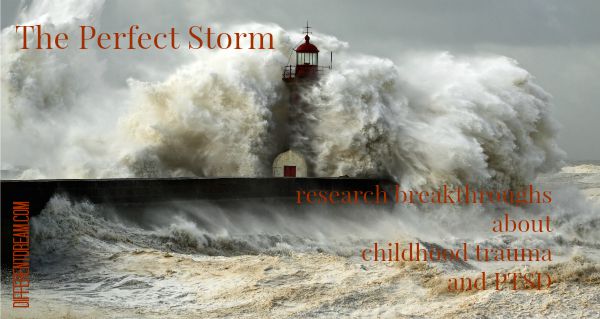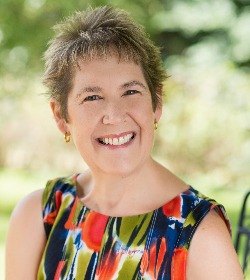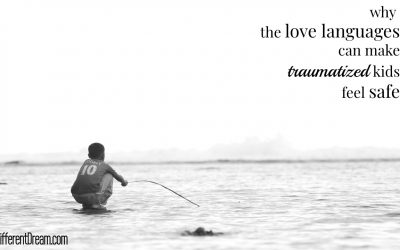Why the Spotlight Is on PTSD in Children

Thank you for stopping by for the sixth post in a weekly series about post-traumatic stress disorder (PTSD) in children. Last week’s post discussed what happens when a person, child or adult, responds to a perceived threat. The Instinctual Trauma Response (ITR) model explained the seven responses the brain makes when a person goes through a traumatic event.
The ITR model made a great deal of sense to me when at age 26, our son was diagnosed with PTSD caused by frequent, invasive, and lifesaving medical treatment he experienced from birth to age 5. At the same time, the answers provided by the model led to several more questions. How do therapists know what goes on in the brain during trauma? How are successful treatment models developed? What had happened in the years between our son’s birth in 1982 and his treatment in 2008 that moved awareness of PTSD in children and adults from relative obscurity into the spotlight?
From Soldier’s Heart to PTSD
To answer those questions, I began to research to find out when PTSD was first identified as a mental illness. I discovered that thousands of years ago, an ancient Egyptian combat vet described the condition in his journal. Descriptions of it can also be found in medieval literature and by physicians in the 1600s and 1700s. PTSD is first mentioned in this country after the Civil War when it was called “soldier’s heart.” The condition is discussed and renamed in every subsequent American war through the 1950s. In 1952, it was called stress response syndrome in the first Diagnostic and Statistical Manual of Mental Disorders (DSM-I). In 1982, DSM-III settled on the current terminology, post-traumatic stress disorder.
The Perfect Storm of Breakthroughs about PTSD in Children
As you can see, the field of adult onset PTSD has been around for years. But PTSD in children didn’t land in the spotlight until a series of events occurred in the 1980s and 1990s.
Breakthrough #1: These events began, strangely enough, in 1989 with the collapse of communism in Eastern Europe. As countries fell, government orphanages was discovered. Families around the world were moved by the terrible conditions in the orphanages and rushed to adopt neglected infants, toddlers, and older children. Everyone involved believed that love would be enough to heal the ill effects of early neglect and that the children would thrive. In some cases, they did. But some children experienced a host of issues: developmental delays, language delays, behavioral issues, and an inability to bond with their new family members. Parents turned to mental health counselors, child psychiatrists, and child psychologists for help. This large influx of families seeking mental health care moved therapists to find answers for their clients.
To read the rest of this post, visit the Key Ministry blog, Church4EveryChild.
Part 1: Writing About PTSD Was Not on My Bucket List
Part 2: Childhood Trauma by Any Other Name Is Still Traumatic
Part 3: 10 Myths about PTSD in Children
Part 4: What Causes PTSD in Children
Part 5: A Look Inside the Brain’s Response to Childhood Trauma
Part 6: Why the Spotlight Is on PTSD in Children
Part 7: Childhood PTSD Symptoms in Tots, Teens, and In Between
Part 8: Why and How Childhood PTSD Is often Misdiagnosed
Part 9: Effective Treatment of PTSD in Children
Part 10: How to Prevent PTSD in Traumatized Children
Part 11: How Parents Can Advocate Effectively for Traumatized Children
Part 12: 4 Reasons Traumatized Kids Need Mentally Healthy Parents
Part 13: Clinging to Faith While Parenting Children with PTSD
Do you like what you see at DifferentDream.com? You can receive more great content by subscribing to the quarterly Different Dream newsletter and signing up for the daily RSS feed delivered to your email inbox. You can sign up for the first in the pop up box and the second at the bottom of this page.
By Jolene
Jolene Philo is the author of the Different Dream series for parents of kids with special needs. She speaks at parenting and special needs conferences around the country. She’s also the creator and host of the Different Dream website. Sharing Love Abundantly With Special Needs Families: The 5 Love Languages® for Parents Raising Children with Disabilities, which she co-authored with Dr. Gary Chapman, was released in August of 2019 and is available at local bookstores, their bookstore website, and at Amazon.
Subscribe for Updates from Jolene
Related Posts
When Caregiving Sparks Stress Instead of Joy, What Can You Do?
When caregiving sparks stress instead of joy, what can you do? Jolene explains practical ways to find the blessings in hard situations.
Using the 5 Love Languages to Help Traumatized Kids
Using the 5 love languages to help traumatized kids makes sense. Whatever causes the trauma, these reasons show why the love languages help.
The Coronavirus, Trauma, and PTSD
The COVID-19 pandemic is causing uneasiness in many children. This post about the coronavirus, trauma, and PTSD explains how parents can tend to their kids’ mental health.






0 Comments